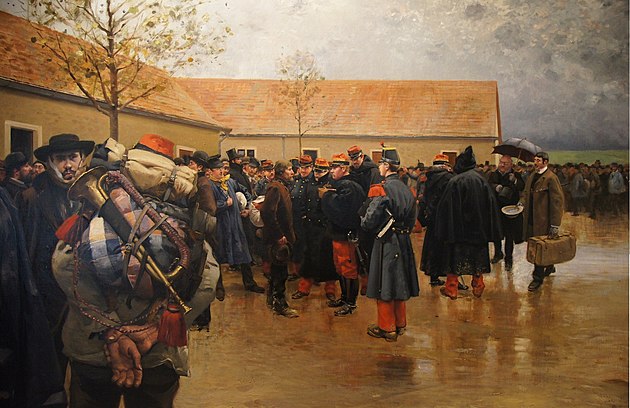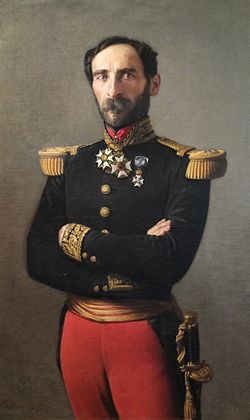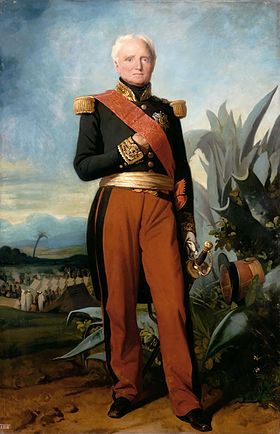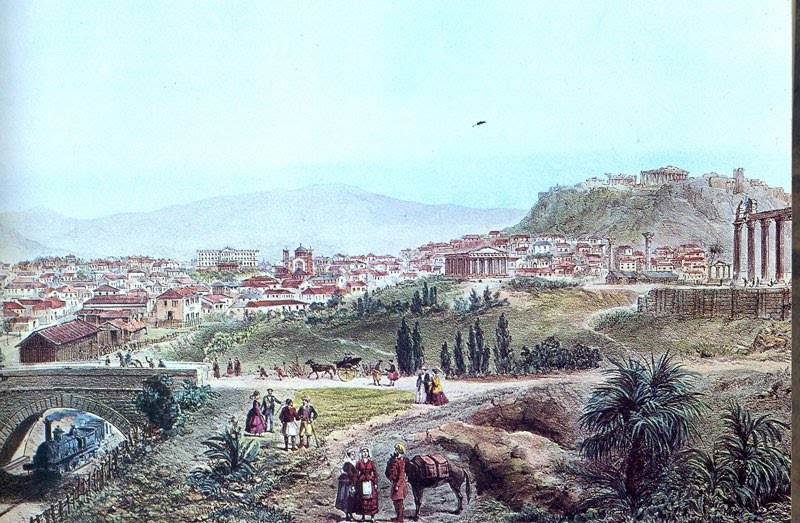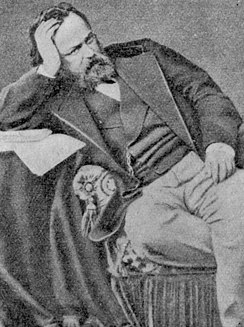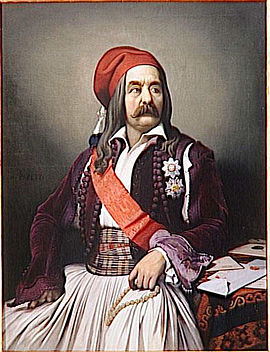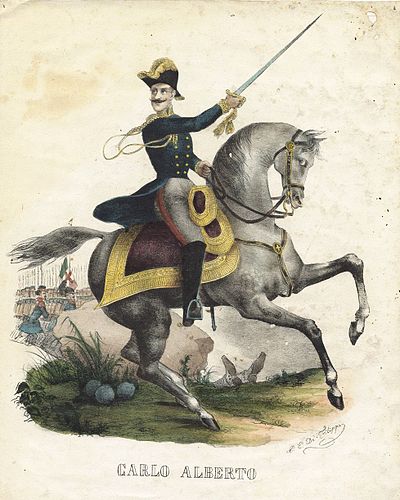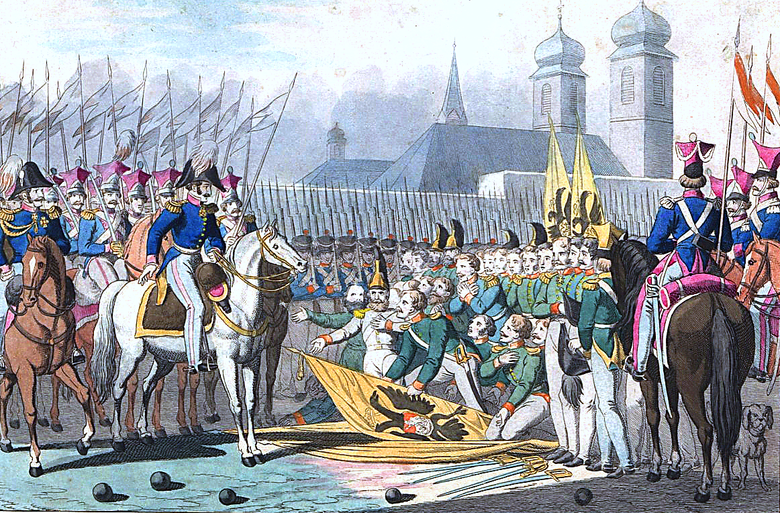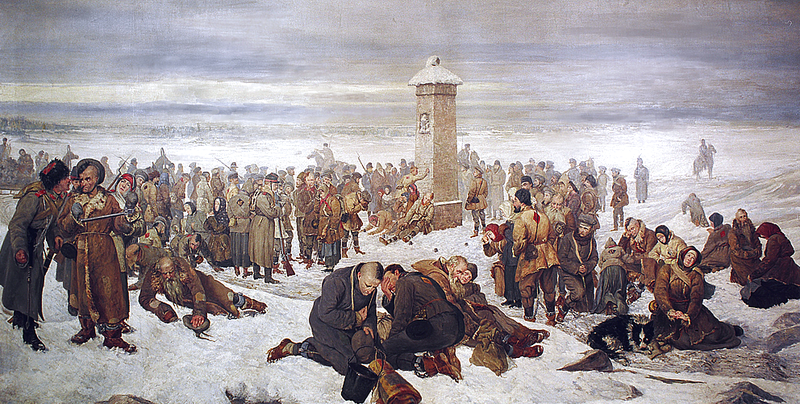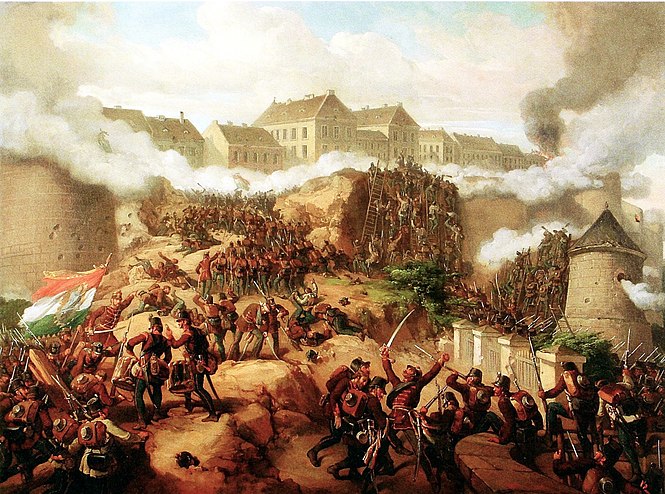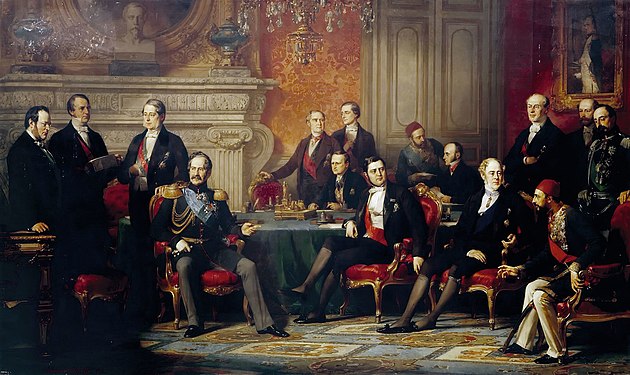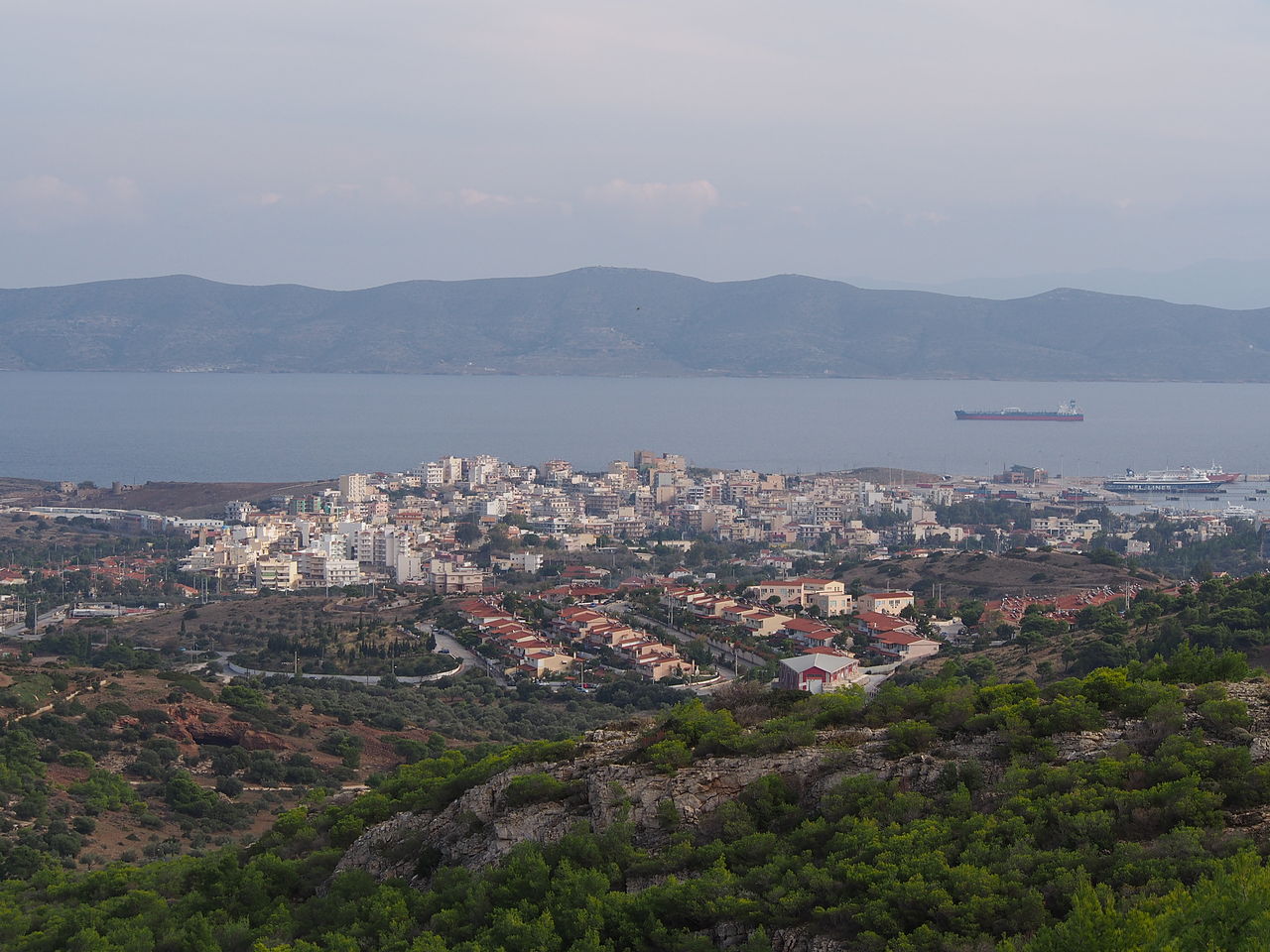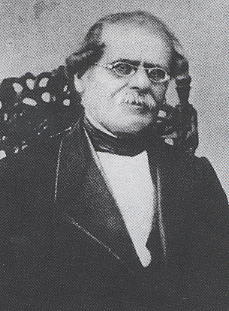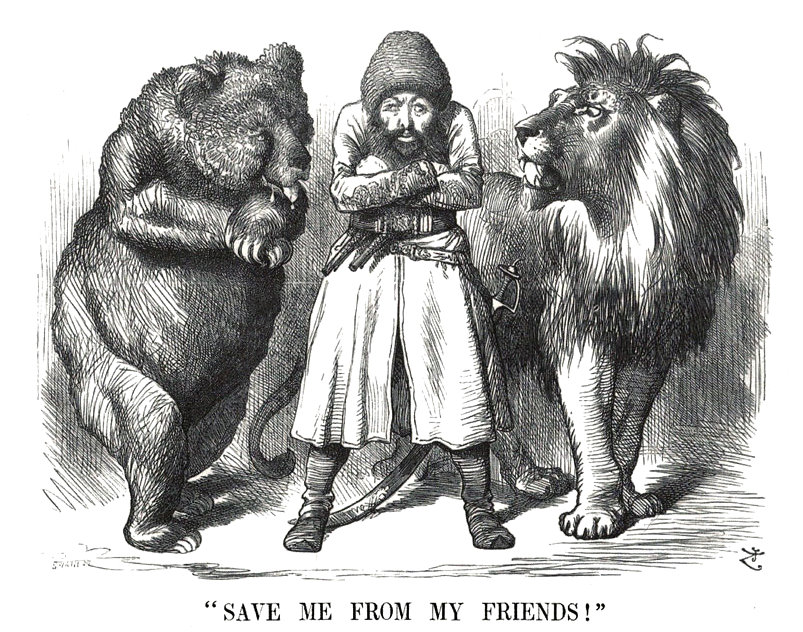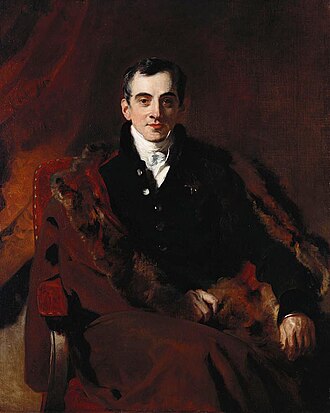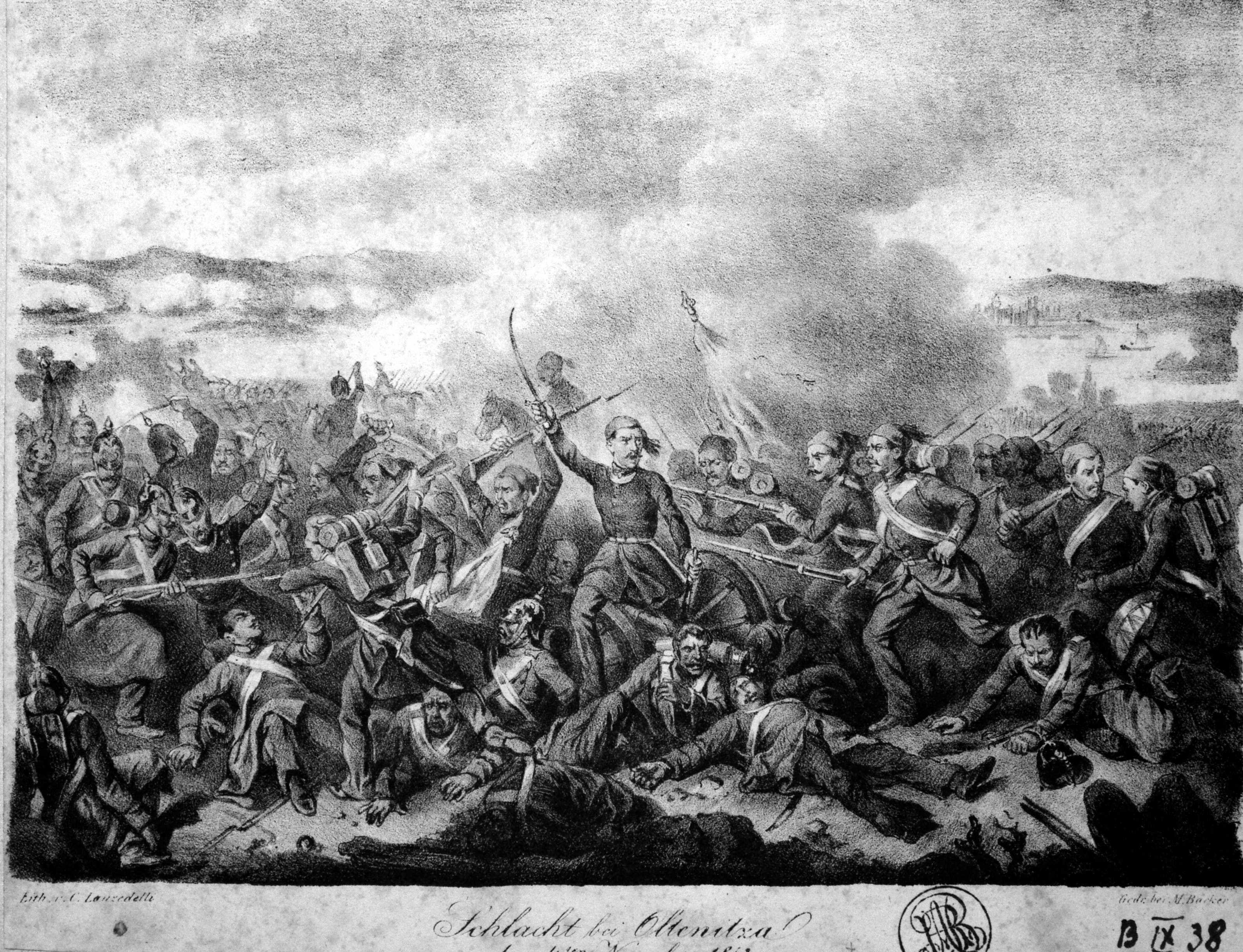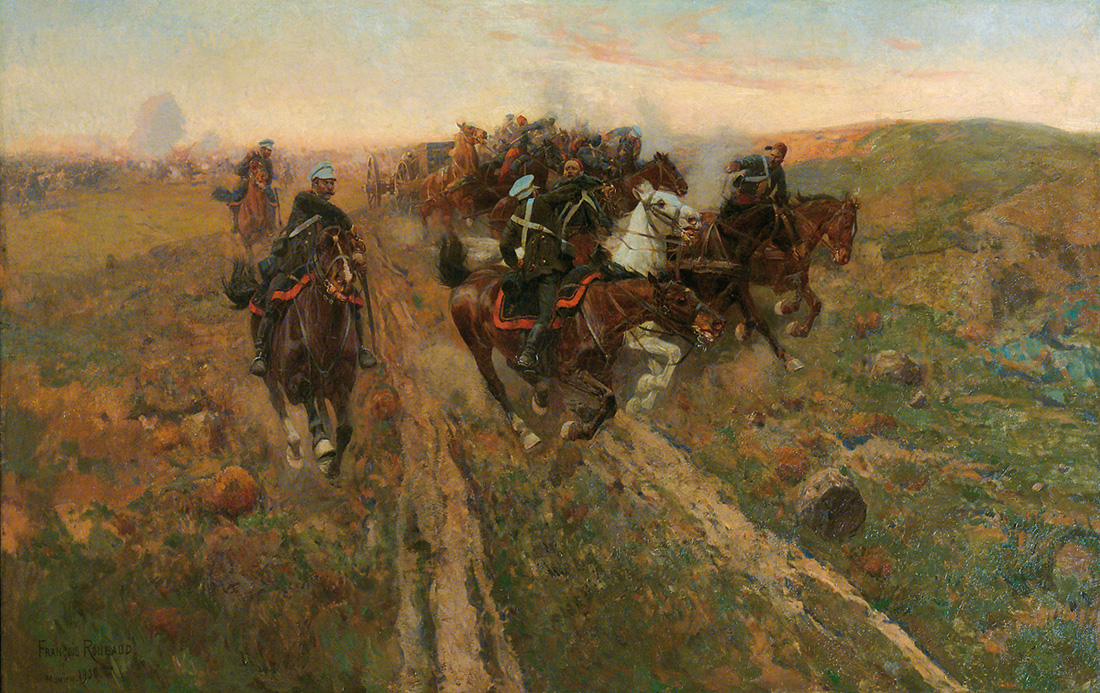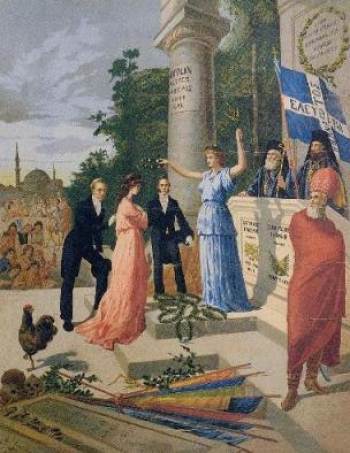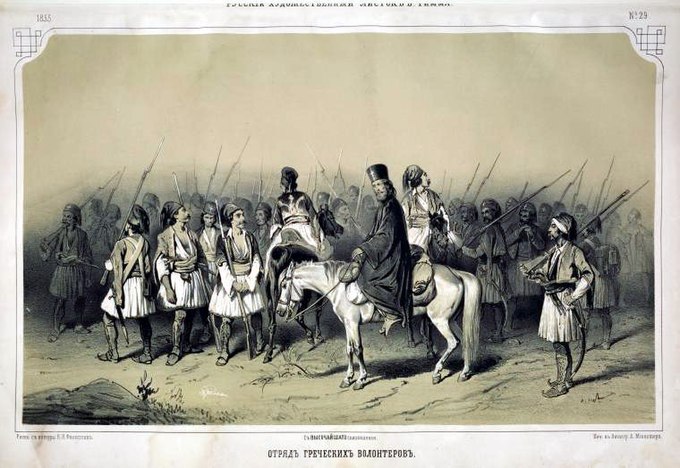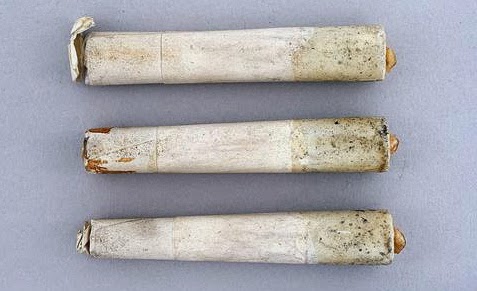Chapter 61: Prussian Blues

The Prussian Army Advances into Maastricht
The decision by Prussia to aid the Dutch in their fight against the French was not a decision they had made lightly. Having signed onto the 1831 Treaty of London, Prussia was obligated to defend the integrity of the Kingdom of Belgium against any adversary that infringed upon their sovereignty. Yet, the collapse of Belgium into bloody civil war between the Walloons and the Flemings and the subsequent intervention of the Dutch and French undoubtedly muddied the waters for the Prussian Government. While the Dutch were clearly in the wrong for broadening the conflict from a simple civil war to a wider regional conflict, French ambition and their long-standing designs on the Low Countries clearly necessitated a response.
Although the French portrayed their efforts to aid the Walloons as purely philanthropic and in keeping with their guarantee of Belgian territorial integrit, there remained a tinge of subterfuge to their motives. French designs on the low countries were well known in Europe dating back to the Carolingian Empire, the Middle Ages, and more recently the Empire of Napoleon when the region had been a province of France. Even after the Napoleonic Wars, France continued to show interest in the Low Countries; they were the first to acknowledge the independence of Belgium from the Netherlands in 1830, and the first to send soldiers to aid the Belgians in winning their freedom from the Dutch in 1831. Economically, France held a strong grip over Belgium as its largest trading partner, thanks to the hostility of their British and Dutch competition. Moreover, many thousands of Belgian workers - mostly Walloons - were invited to work in Paris, Lyon, Caen, and Toulon among many others and were permitted to send remittances to their kith and kin back home in Belgium.
Their monarchies were also linked thanks to the efforts of the French King Louis-Philippe who championed the selection of Prince Otto of Bavaria for the throne of the nascent state. Otto was seen by the French Government as an impressionable young man that would be susceptible to French influence and would willingly bring his kingdom further into the French orbit. Louis-Philippe would even marry his youngest daughter to the new Belgian king, uniting their households both politically and personally in holy matrimony. Sure enough, King Otto would reciprocate these acts of kindness by ordering the demolition of the Barrier forts along their mutual border and establishing closer trade relations with the French, much to the chagrin of Britain and the other Powers.
So, it was that the deposition of Otto presented both a setback and an opportunity for the French government, for while the relationship between the King of France and the King of Belgium was close, the relation between the French people and the Walloons was even closer. In many ways the Walloons were a kindred people of the French, their language Walloon was generally considered to be a regional dialect of French. Their customs and traditions were similar as were their systems of government and legal traditions which were heavily influenced by Salic Law. Even their leaders, Charles Rogier, Jean Baptiste Nothcomb, and Henri de Brouckere were Frenchmen or heavily predisposed towards France. Many Walloons had been born and bred under French rule and remembered the days of the Republic and the Empire with great fondness and admiration, with some actively advocating for the union of Belgium and France. These feelings were not shared by all however, as the Flemings despised the French, having suffered terrible persecution under the French occupation and would resist Walloon efforts to seek closer accommodations with France for many years.
The deposition of King Otto in September 1847 and the revolt by the Flemings later that year, however, would conveniently remove the remaining constraints upon the Walloon dominated Belgian Government. Freed from any semblance of duality, the Francophile Walloon Government began moving the country even closer to France. They imprisoned known Orangists in Wallonia and the parts of Flanders under their control, and they closed down newspapers that opposed their initiatives where ever they could. They recruited French officers to fill the gaps left vacate by rebellious Fleming commanders and they hired French lawyers and accountants to fill openings in the government’s bureaucracy. They would even offer the vacant Belgian crown to King Louis-Philippe and his son, the Duc d’Nemours. Although both men wisely refrained from accepting the offer immediately. However, the Duc d’Nemours candidly refused to deny his interest in the Belgian crown, much to the concern of France’s neighbors. By the beginning of January 1848, it was clear that Belgium was an independent state in name only having completely fallen under the suzerainty of France.
For many of the greybeards and veterans of the Napoleonic Wars in Berlin, the prospect of French dominance in the Low Countries was a terrifying development, bringing to mind the hardships and tribulations they had endured during the Napoleonic Wars. Men like Ferdinand von Rohr, Karl Freiherr von Muffling, and Prince Wilhelm who had all served during the Napoleonic Wars held great sway over King Frederick William IV, convincing him of the great threat France posed to Prussia and the German Confederation. If left unchecked, France would undoubtably press on into the Rhineland and beyond, until all of Europe lay under their banner.
The Netherlands in contrast was a friend they argued, who had gone to great lengths to improve relations with its neighbors and friends over the years. Their economic bonds and historical friendship, as well as the mutual animosity with France - and by proxy Belgium - would help revive Anglo-Dutch relations during this time. And while Britain would not abandon their interests for an independent Belgium within their orbit, they would similarly refrain from coercing the Dutch into accepting the 1831 Treaty of London, a treaty which now seemed to benefit only the French. Dutch relations with Russia had also improved thanks to the influence of the Queen Consort Anna Pavlona of Russia who frequently corresponded with her brother Tsar Nicholas on behalf of her husband, King William II
Dutch relations with Prussia would also improve thanks to the close familial links between the House of Orange and the House of Hohenzollern.[1] King William II of the Netherlands was the first cousin with King Frederick William IV of Prussia through his mother Queen Wilhemine of Prussia, the sister of King Frederick William III. The two kings shared a friendly, if somewhat complicated relationship with one another dating back to their childhood when King William and his family had fled to Berlin after the fall of United Provinces to the French in 1795. The true champions of a Dutch-Prussian rapprochement however, would be their brothers, Prince Frederick of the Netherlands and Prince Wilhelm of Prussia. Both had served together in the Prussian Army during the closing days of the Napoleonic Wars, fighting at Leipzig and the climactic battle of Waterloo respectively. Both men earned great accolades and honors for their effort in the war despite their relatively young age (they were only 16 at the start of the Sixth Coalition). Most importantly, the two developed a life-long friendship with one another that would be a pivotal relationship in the years ahead of them.


Prince Frederick of the Netherlands (Left) and Prince Wilhelm of Prussia (Right)
The Napoleonic Wars would also leave the young boys with a deep-seated hatred of the French that would remain with them for the rest of their days. It was this animosity that drove Dutch foreign policy during the 1830’s and 1840’s to seek an accommodation with Prussia, with Prince Frederick being an especially outspoken proponent of a Prussian alliance. His experience in the Prussian Army would also lead him to model the Dutch army after their vaunted Prussian counterpart, supplying his soldiers with Prussian arms and drilling them in Prussian tactics and maneuvers. Using his prerogative as Commissioner General, Prince Frederick invited Prussian officers to instruct at the Dutch Royal Military Academy in Breda and to drill young soldiers into capable fighters. Following his father’s death in 1842, however, Prince Frederick would promptly retire from public life for several years, yet throughout his life in seclusion, he continued to foster his Prussian relations on behalf of the Dutch government. These relations that would prove indispensable to the Netherlands in their fight against France, none more so than the one with Crown Prince Wilhelm.
When the Netherlands intervened in the Belgian Civil War on behalf of the Flemings on the 9th of April, Prince Frederick and much of the Dutch Government recognized that a French response would be imminent and against France they stood little chance alone. Therefore, they began reaching out to everyone and anyone that might aid them in their cause, chief among them being Prussia. The Dutch government would find a willing ally in Prince Wilhelm who despised the French and eagerly petitioned his brother King Frederick William IV to intervene on behalf of the Dutch and Flemings. The Prince of Prussia exclaimed how the French economy lay in ruins and if the Prussian army were to deal a decisive blow against the French in the Low Countries they could be brought to the negotiating table within a matter of weeks. Frederick William remained unconvinced, however, and refused to side with the Dutch for the moment as his own Kingdom lay on the brink of revolution and ruin.
The Kingdom of Prussia, like much of Europe, was gripped in a terrible famine and economic recession dating back to the start of 1845. Bread riots were common occurrences day in and day out, while unemployment and poverty soared across the Kingdom. The tide of liberalism that was sweeping across the German Confederation had also taken up root in Berlin as Liberals called for the creation of a constitution and a legislature, while Nationalists called for the unification of the German states into a singular German Empire. While Prussia would not experience anywhere near the levels of unrest felt in Austria or Belgium; the protestors were certainly becoming more forceful and more violent. Ultimately, they would force King Frederick William IV to establish a bicameral legislature, the Vereinigter Landtag, despite the opposition of the Conservatives, the Junkers, and the King’s brother Prince Wilhelm and promise the writing of a constitution, albeit a rather conservative one.
Even the once vaunted Prussian army had fallen on hard times as austerity and economic stagnation would see its ranks slashed from its high of 358,000 men under arms at the end of the Napoleonic Wars to little more than 144,000 soldiers by the start of 1848. The Prussian General Staff which was once the finest in the land had also been eroded as many of the great minds and strategists of the Coalition Wars had resigned or retired long ago leaving a relatively untested crop of men in their place. France in comparison, had rebuilt its’ military following the Revolutionary and Napoleonic Wars, boosting its ranks to well over 321,000 men by 1848, while its officer corps was considered among the best in the world having served in numerous conflicts overseas in recent years. The French Navy boasted the second largest fleet in the world after Britain, featuring high quality frigates, ships of the line, steamships. Their weaponry was top notch, having been refined after decades of use in Algiers and Egypt and their logistics system was more than adequate for the conflict at hand. On paper, King Frederick William IV was wise to resist the call for war as Prussia was not prepared for such a fight.
While King Frederick William IV and the Prussians waited on the sideline, France acted vigorously and entered Belgium on the 18th of April. Overwhelmed by the superior numbers and tactics of the French, the Dutch army under Prince William of Orange was quickly pushed out of Wallonia and into Flanders. While certainly a bold and daring commander, the young Dutch Prince was clearly outmatched by his French foes, leading the Dutch and Flemings to be gradually pushed Northward. While Dutch and Fleming resistance would stiffen somewhat in Flanders and along the Dutch border, they were clearly losing on all fronts in the face of the French onslaught. By the 27th of April, all of Belgium, barring a small salient around Antwerp, Mechelen, Hasselt, and Maastricht had fallen to the French and the Walloons. Victory for the French and the Walloons appeared to be all but certain, yet on the verge of their great victory, they would make a crucial mistake.
On the 28th of April, elements of the French 2nd Army corps advancing along the English Channel coast fell upon the small port city of Neuzen.[2] The French had been faced with an especially stubborn resistance by the native Flemings and Dutch forces in the area, whose hit and run tactics succeeded in inflicting terribly high casualties upon the invading French. In response, the French commander in the region, General de Brigade Lucien de Montagnac released his Walloons upon the poor town, who gladly massacred the relatively few defenders protecting Neuzen, looted the port of its riches, and put the city to the torch before continuing on to the next town in their path the following day. What would have been a normal act of war under other circumstances was regarded with utter disgust by the states of Europe as Neuzen fell within the Dutch province of Zeelandic Flanders.

The Rape of Neuzen
The French invasion of Dutch territory, territory which had remained with the Netherlands after the Belgian Revolution and been reaffirmed as Dutch territory under the now defunct 1831 Treaty of London, sparked panic of French conquest across the continent. While a case could have been made regarding the capture of the town as a strategic necessity to deny its use to the enemy, the harsh manner in which the French had pillaged and destroyed the city sparked mass outrage and anger against them. No longer was the war in the Low Countries portrayed as a noble defense of Belgian sovereignty against the perfidy of the Dutch, it was now a depicted by much of Europe as a French war of aggression against the Kingdom of the Netherlands. The “Rape of Neuzen” as it was so eloquently called by Dutch propaganda, provided Prince Wilhelm and the Prussian war party with all the justification for Prussian intervention that they could hope for. Yet even this was not enough for the tepid King Frederick William who continued to vacillate between going to war and staying at peace. It is fortunate then for the Prussian war hawks that agents of the British Government began to grease the wheels of war in Berlin.
On the 1st of May, the British ambassador to the German Confederation, Sir William Fox-Strangways, 4th Earl of Ilchester arrived in Berlin requesting an audience with his Dutch counterpart Friedrich Heinrich Wilhelm van Scherff and King Frederick William IV.[3] Although the exact terms of their discussion are unknown, it is reported that Ilchester provided King Frederick William IV and van Scherff with assurances of British neutrality as well as moral support should Prussia join with the Dutch in their fight against the French. With Britain, ostensibly in their corner and the events in the Low Countries reaching a breaking point, King Frederick William finally acquiesced to the demands of the war party and moved to assist the Dutch. However, their assistance would not come cheaply.
While fears of France and Dutch diplomacy certainly played an important role in pushing Prussia to war, the true draw for Berlin were the promises of recompense offered by the Dutch government. In return for their support against France in this present conflict, the Kingdom of the Netherlands would immediately cede, or rather renounce their claims to the contested and highly valuable zinc spar mining commune of Neutral Moresnet to the Kingdom of Prussia. Additionally, upon the successful liberation of the Southern Provinces from France, Prussia was to receive further compensation in the form of the Grand Duchy of Luxembourg.
With the terms of their alliance established, the Prussian Government immediately moved to assist the Dutch, dispatching Prince Wilhelm and the Prussian 1st Army, also known as the Army of the Lower Rhine to the region with Field Marshal Karl Freiherr von Muffling acting as his Chief of Staff. The mobilization of Prussian units had been expedited thanks to the early social unrest in the region following the initial outbreak of hostilities in Belgium several months prior. On the 5th of May, Prince Wilhelm’s army comprised of the Gardekorps, III Armeekorps, VII Armeekorps, and VIII Armeekorps totaling some 86,000 men readied to march into the former Kingdom of Belgium.
Arrayed against them was the French 1st Army, fleshly christened as the Armee du Nord under the command of Marshal Thomas Robert Bugeaud, duc d’Isly. The duc d’Isly’s army numbered over 106,000 strong, split across four army corps; his main army of 84,000 soldiers in Belgium (1st Corps, 2nd Corps, and 3rd Corps) and another 22,000 soldiers of the 4th Corps held in reserve across the border at Arras and Lille. The French were also assisted in the Low Countries by a much reduced “Belgian Army”, numbering some 18,000 men which operated under the nominal authority of the Walloon Government. In truth, the Walloons were led by French officers and relegated to a French auxiliary force of irregulars and light infantry. To his South, D’Isly was also supported by the 68,000 strong Armee du Rhin under the command of General Theodore Voirol, which was stationed along the border with the Prussian Rhineland Province.
The other army in the theater was the combined Dutch-Fleming Army, numbering around 47,000 men under the command of the Prince of Orange, but this force, commonly referred to as the Leger van Antwerpen, was largely divided between Antwerp and a small region surrounding Maastricht. While they were certainly inferior numerically to their enemies and ally, the Dutch presented a well disciplined and highly motivated front against the French. Their weaponry was of high quality and their lines of communication and supply were well tuned for the fight at hand. Most importantly, the Dutch were now led by the experienced and battle hardened Prince Frederick who had been called out of his early retirement by his brother King William II. Taking over from his beleaguered nephew Prince William, Prince Frederick immediately stiffened the front with the French, reinforcing the threatened garrisons at Antwerp and Maastricht and dispatching skirmishers to harass the French flanks where possible, enabling the Dutch to hold a line running from the Scheldt and Antwerp in the West to Maastricht and the Maas in the East.

Prince Frederick of Orange Leading the Defense of Mechelen
While the return of Prince Frederick would help stabilize the front line for a time, the situation was extremely dire for the Dutch and their Fleming allies, who were outnumbered nearly 3 to 1 in theater. Therefore, the news of Prussian assistance would do much to bolster flagging Dutch morale as they would immediately rebalance the numbers more to their liking. Nevertheless, the odds remained stacked against the Allies as 133,000 Dutch, Flemings, and Prussian soldiers faced off against 192,000 French and Walloon soldiers. Although they remained outmanned by their adversary, Prince Wilhelm and the Prussians did have one major advantage on their side, surprise.
Despite the concerns of sentries along the Prussian border, much of the French high command remained stubbornly obtuse to the movements of the Prussian army in the Rhineland, believing it to be in reaction to the uptick of revolutionary activity in the region, not a mobilization for war in the Low Countries. As a result, much of the French army in Belgium had been dispersed across the country to quickly overwhelm their Dutch adversaries. 1st Corps under the duc d’Nemours was presently besieging Mechelen and making moves to encircle Antwerp. 2nd Corps under the command of General Magnan was marching along the English Channel coast and recently started efforts to carry the fight into Zeeland and Zuid-Beveland. General Vaillant and 3rd Corps were presently besieging the formidable Dutch fortress at Maastricht and the Walloons were scattered everywhere in between.
Hoping to take advantage of the opportunity before him, Prince Wilhelm immediately set his sights on the French 3rd Corps outside Maastricht. Of the three French army corps it was the most isolated and the furthest from support. It was also opposed to a Dutch force roughly equal to its own, albeit one that was dispersed across the region and presently under siege by the French. If the Prussians could destroy the French units outside Maastricht before any aid could arrive from the rest of the Armee du Nord, then the balance of power in the region would swing decisively in their favor. And yet, the Prussian plan relied upon speed and secrecy, as well as a certain degree of coordination with the Dutch at Maastricht which would require the relaying of information between them. Nevertheless, Wilhelm approved of the bold plan and immediately leapt into action. Leaving VII Corps behind to screen the Rhineland against any movements by the French Armee du Rhin, Prince Wilhelm and the remainder of the Prussian Army of the Lower Rhine quickly fell upon the border town of Verviers.
As the French and Walloons had turned their focus towards the Dutch and Flemings, their flank in Luxembourg and Liege had been left criminally undermanned and underprepared for such an assault and within minutes Verviers had fallen to the Prussians. With the border crossing secured, Prince Wilhelm immediately moved to confront the French army at Maastricht with the Gardekorps and III Armee-Korps, while VIII Armee-Korps was sent to cut their lines of supply and communication by taking the city of Liege. Despite its prominence as a logistics and communication hub, Liege was defended not by regulars of the French army, but by Walloon militiamen and local partisans. While certainly brave, these men were no match for the Prussians of VIII Armeekorps who easily brushed them aside, occupied the city’s great bastions, and set off to rejoin the main army at Maastricht later that same day.
As this was all taking place, Prince Wilhelm of Prussia made his move against the French 3rd Corps still encamped outside Maastricht. Despite the speedy advance of the Prussians, French sentries had discovered their approach and relayed this information to General Vaillant who promptly began withdrawing his men from the siege of Maastricht. Nevertheless, his forces had been widely dispersed across the area; 8. Division was scattered to the North of Maastricht, while another two (10. Division and 11. Division) were across the Meuse River. It would take some time to fully evacuate everyone, time he did not have. Barely an hour after Vaillant issued the order to retreat from Maastricht, Prince Wilhelm and the Prussian army arrived on the scene ready for battle.
Immediately, Prince Wilhelm dispatched the Gardekorps to seize the French pontoon bridges over the Meuse near Heugem before they could be destroyed by 10. Division which was still in the process of crossing the river. The French fought valiantly as they slowly ceded ground in the face of the superior numbers of the Prussians. Nevertheless, the casualties inflicted upon the French divisions by the Prussians were grievous, some 2,000 men lay dead or dying within the first thirty minutes of fighting. The Gardekorps received its fair share of casualties as well, numbering over 700 men dead and another 500 wounded in the same time. Nevertheless, the Prussians were slowly pushing the Frenchmen to the river leading to a desperate melee at the pontoon bridges. Two of the four bridges would be destroyed, but the remaining two were captured intact by the Prussians, enabling them to surge across the Meuse.

Charge of the Gardekorps
The fighting was intense as the French defiantly stood against the withering fire of the Prussian guns. Nevertheless, a Corps fighting against an Army was an unfair fight by all accounts. Nevertheless, the French held an advantage in firepower. Several units of the French Armee du Nord had been equipped with new rifles, called the Minié rifle as part of a wider test of the new weapon.[4] Developed by French Major Claude-Etienne Minié, these rifles were muzzle-loaded weapons that utilized special bullets called Minié balls which fired straighter and farther than normal musket balls. The rifle and the ball had been developed by Minié as a counter to the Algerians long muskets which routinely outmatched the French guns leading to a flurry of new muskets and rifles on the market. While the guns had been designed with Algiers in mind, the conflict in Belgium provided the French government with a real testing ground for the weapon and approved a limited trial of the Minie rifle. Despite their limited usage, the weapons proved to be very adept at killing, providing the outnumbered Frenchmen at Maastricht with a sizeable force multiplier that day.
Once across the Meuse, the men of the Gardekorps immediately came under fire from French guns embanked atop Mount Saint Peter. The Guns of Saint Peter had been emplaced on the mountain by the French as part of the siege of Maastricht, but now with the Prussians attacking they provided a desperately needed covering fire for the retreating French infantry. The withering fire of the French cannons stopped the Prussian Gardekorps in its tracks, forcing it to dig in and weather the storm. They were aided timely intervention of the Dutch garrison in Maastricht which sortied from the city, drawing away some of the French cannons. With the French atop Mount Saint Peter distracted, the Gardekorps proceeded to fight its way to the base of the mountain. Surrounded, the French gunners spiked their cannons and attempted to escape from the hill, although most were captured some did succeed in escaping to fight another day.
Back across the river, the Prussian VII Armeekorps was sent against the isolated French 11. Division which had been surrounded in the hamlet of De Heeg. The French fiercely resisted the Prussians for several hours, under excrutiating fire, but remained disciplined and resilient throughout. Many Frenchmen barricaded themselves in barns or farmhouses, while others hid themselves behind stonewalls or wooden frences to protect themselves from the overwhelming gunfire of the Prussians. Nevertheless, they were fighting a losing battle and with the loss of the pontoon bridges to the Prussians their position had become untenable. Around mid afternoon, their commander General de Division Adolphe de Niel led a desperate sally from the little farming village, only to be gunned down immediately. Surprisingly, Niel would survive the battle, but with his incapacitation their situation became hopeless, leading them to surrender.
With the surrender of 11. Division, the focus of the battle shifted to the west bank of the Meuse once again as the exhausted Gardekorps advanced on the remainder of the French 3rd Corps which had consolidated around the township of Kanne. The ensuing firefight would heavily strain the tired men of Gardekorps who were nearly pushed back across the Meuse by the French. By this time, elements of the Prussian VIII Armeekorps began to arrive on scene to lend its aid to the exhausted Gardekorps. With the Prussians threatening him from the South, General Vaillant ordered a general retreat from the field of battle and withdrew to the East. To prevent the Prussians and Dutch from following, General de Brigade Patrice MacMahon’s 18th Brigade was tasked with the rearguard near Vroenhoven. Against the full might of the Prussian army, MacMahon’s men stood little chance of victory, but they bravely performed their duty for three agonizing hours before finally retreating under the cover of darkness. Although Prince Wilhelm was compelled to pursue the French, his men were simply too exhausted to go forward bringing the battle to an end.
While French 3rd Corps had managed to escape from Maastricht intact, it had suffered tremendous losses in the process; 10. Division had lost nearly a third of its 7,000 men in the fighting around the pontoon bridges, while 9. Division’s 18th Brigade suffered casualties above 60% during their rearguard action. The worst casualties came from 11. Division which effectively ceased to exist as an organized unit. Trapped on the East bank of the Meuse following the capture of the pontoon bridges, the Frenchmen of 11. Division who were slowly grinded down by the unrelenting fire of the Prussian soldiers until only 2,500 men of the original 7,000 remained. Recognizing their desperation, the Prussian commander General Karl von der Groeben offered them terms of surrender which were accepted without complaint by the beaten and battered Frenchmen of 11. Division who would spend the rest of the war in Prussia as prisoners of War.
The Siege of Maastricht was a tremendous victory for the Dutch-Prussian Alliance over their French and Walloon adversaries, but it was not the total victory that Prince Wilhelm had hoped it to be. VIII Armee Korps had been late in arriving at Maastricht, and when it did arrive it was slow and lethargic enabling much of the French 3rd Corps to escape to the West. The 3rd Corps, while bloodied, remained a viable fighting force in Belgium. Moreover, the Prussian intervention had been detected by the French Marshal Thomas Bugeaud, duc d’Isly who called up his reserves and moved to assist Vaillant’s men with everything he could possibly spare. The Prussians had also suffered steep casualties, amounting to well over 8,000 men dead, wounded, missing, or captured on the day. Despite his promises of a quick and easy war to his brother and the Prussian Government, it was becoming increasingly clear that the Belgian War would be anything but short.
Next Time: The End of July
[1] King William II was the first cousin of King Frederick William IV through his mother Queen Wilhelmine of Prussia, the sister of King Frederick William III. His brother Prince Frederick of the Netherlands was also married to their cousin Princess Louise of Prussia, who was the sister of king Frederick William IV and Prince Wilhelm (OTL Kaiser Wilhelm I).
[2] The Dutch port of Terneuzen was commonly referred to as “Neuzen” prior to the 20th Century.
[3] As Prussia was a constituent of the German Confederation it did not receive ambassadors from other states, although it did receive legations and Charge d'Affaires from other countries.
[4] The Minié ball was invented by Claude-Etienne Minié in 1846 in OTL and the Minié Rifle was created three years later in 1849. With the harsher relations with Britain and the continued alliance with Egypt and Persia, there is an increased demand for better weapons in France ITTL, which has resulted in a slightly earlier development of the Minié Ball and Minié Rifle.

The Prussian Army Advances into Maastricht
The decision by Prussia to aid the Dutch in their fight against the French was not a decision they had made lightly. Having signed onto the 1831 Treaty of London, Prussia was obligated to defend the integrity of the Kingdom of Belgium against any adversary that infringed upon their sovereignty. Yet, the collapse of Belgium into bloody civil war between the Walloons and the Flemings and the subsequent intervention of the Dutch and French undoubtedly muddied the waters for the Prussian Government. While the Dutch were clearly in the wrong for broadening the conflict from a simple civil war to a wider regional conflict, French ambition and their long-standing designs on the Low Countries clearly necessitated a response.
Although the French portrayed their efforts to aid the Walloons as purely philanthropic and in keeping with their guarantee of Belgian territorial integrit, there remained a tinge of subterfuge to their motives. French designs on the low countries were well known in Europe dating back to the Carolingian Empire, the Middle Ages, and more recently the Empire of Napoleon when the region had been a province of France. Even after the Napoleonic Wars, France continued to show interest in the Low Countries; they were the first to acknowledge the independence of Belgium from the Netherlands in 1830, and the first to send soldiers to aid the Belgians in winning their freedom from the Dutch in 1831. Economically, France held a strong grip over Belgium as its largest trading partner, thanks to the hostility of their British and Dutch competition. Moreover, many thousands of Belgian workers - mostly Walloons - were invited to work in Paris, Lyon, Caen, and Toulon among many others and were permitted to send remittances to their kith and kin back home in Belgium.
Their monarchies were also linked thanks to the efforts of the French King Louis-Philippe who championed the selection of Prince Otto of Bavaria for the throne of the nascent state. Otto was seen by the French Government as an impressionable young man that would be susceptible to French influence and would willingly bring his kingdom further into the French orbit. Louis-Philippe would even marry his youngest daughter to the new Belgian king, uniting their households both politically and personally in holy matrimony. Sure enough, King Otto would reciprocate these acts of kindness by ordering the demolition of the Barrier forts along their mutual border and establishing closer trade relations with the French, much to the chagrin of Britain and the other Powers.
So, it was that the deposition of Otto presented both a setback and an opportunity for the French government, for while the relationship between the King of France and the King of Belgium was close, the relation between the French people and the Walloons was even closer. In many ways the Walloons were a kindred people of the French, their language Walloon was generally considered to be a regional dialect of French. Their customs and traditions were similar as were their systems of government and legal traditions which were heavily influenced by Salic Law. Even their leaders, Charles Rogier, Jean Baptiste Nothcomb, and Henri de Brouckere were Frenchmen or heavily predisposed towards France. Many Walloons had been born and bred under French rule and remembered the days of the Republic and the Empire with great fondness and admiration, with some actively advocating for the union of Belgium and France. These feelings were not shared by all however, as the Flemings despised the French, having suffered terrible persecution under the French occupation and would resist Walloon efforts to seek closer accommodations with France for many years.
The deposition of King Otto in September 1847 and the revolt by the Flemings later that year, however, would conveniently remove the remaining constraints upon the Walloon dominated Belgian Government. Freed from any semblance of duality, the Francophile Walloon Government began moving the country even closer to France. They imprisoned known Orangists in Wallonia and the parts of Flanders under their control, and they closed down newspapers that opposed their initiatives where ever they could. They recruited French officers to fill the gaps left vacate by rebellious Fleming commanders and they hired French lawyers and accountants to fill openings in the government’s bureaucracy. They would even offer the vacant Belgian crown to King Louis-Philippe and his son, the Duc d’Nemours. Although both men wisely refrained from accepting the offer immediately. However, the Duc d’Nemours candidly refused to deny his interest in the Belgian crown, much to the concern of France’s neighbors. By the beginning of January 1848, it was clear that Belgium was an independent state in name only having completely fallen under the suzerainty of France.
For many of the greybeards and veterans of the Napoleonic Wars in Berlin, the prospect of French dominance in the Low Countries was a terrifying development, bringing to mind the hardships and tribulations they had endured during the Napoleonic Wars. Men like Ferdinand von Rohr, Karl Freiherr von Muffling, and Prince Wilhelm who had all served during the Napoleonic Wars held great sway over King Frederick William IV, convincing him of the great threat France posed to Prussia and the German Confederation. If left unchecked, France would undoubtably press on into the Rhineland and beyond, until all of Europe lay under their banner.
The Netherlands in contrast was a friend they argued, who had gone to great lengths to improve relations with its neighbors and friends over the years. Their economic bonds and historical friendship, as well as the mutual animosity with France - and by proxy Belgium - would help revive Anglo-Dutch relations during this time. And while Britain would not abandon their interests for an independent Belgium within their orbit, they would similarly refrain from coercing the Dutch into accepting the 1831 Treaty of London, a treaty which now seemed to benefit only the French. Dutch relations with Russia had also improved thanks to the influence of the Queen Consort Anna Pavlona of Russia who frequently corresponded with her brother Tsar Nicholas on behalf of her husband, King William II
Dutch relations with Prussia would also improve thanks to the close familial links between the House of Orange and the House of Hohenzollern.[1] King William II of the Netherlands was the first cousin with King Frederick William IV of Prussia through his mother Queen Wilhemine of Prussia, the sister of King Frederick William III. The two kings shared a friendly, if somewhat complicated relationship with one another dating back to their childhood when King William and his family had fled to Berlin after the fall of United Provinces to the French in 1795. The true champions of a Dutch-Prussian rapprochement however, would be their brothers, Prince Frederick of the Netherlands and Prince Wilhelm of Prussia. Both had served together in the Prussian Army during the closing days of the Napoleonic Wars, fighting at Leipzig and the climactic battle of Waterloo respectively. Both men earned great accolades and honors for their effort in the war despite their relatively young age (they were only 16 at the start of the Sixth Coalition). Most importantly, the two developed a life-long friendship with one another that would be a pivotal relationship in the years ahead of them.


Prince Frederick of the Netherlands (Left) and Prince Wilhelm of Prussia (Right)
The Napoleonic Wars would also leave the young boys with a deep-seated hatred of the French that would remain with them for the rest of their days. It was this animosity that drove Dutch foreign policy during the 1830’s and 1840’s to seek an accommodation with Prussia, with Prince Frederick being an especially outspoken proponent of a Prussian alliance. His experience in the Prussian Army would also lead him to model the Dutch army after their vaunted Prussian counterpart, supplying his soldiers with Prussian arms and drilling them in Prussian tactics and maneuvers. Using his prerogative as Commissioner General, Prince Frederick invited Prussian officers to instruct at the Dutch Royal Military Academy in Breda and to drill young soldiers into capable fighters. Following his father’s death in 1842, however, Prince Frederick would promptly retire from public life for several years, yet throughout his life in seclusion, he continued to foster his Prussian relations on behalf of the Dutch government. These relations that would prove indispensable to the Netherlands in their fight against France, none more so than the one with Crown Prince Wilhelm.
When the Netherlands intervened in the Belgian Civil War on behalf of the Flemings on the 9th of April, Prince Frederick and much of the Dutch Government recognized that a French response would be imminent and against France they stood little chance alone. Therefore, they began reaching out to everyone and anyone that might aid them in their cause, chief among them being Prussia. The Dutch government would find a willing ally in Prince Wilhelm who despised the French and eagerly petitioned his brother King Frederick William IV to intervene on behalf of the Dutch and Flemings. The Prince of Prussia exclaimed how the French economy lay in ruins and if the Prussian army were to deal a decisive blow against the French in the Low Countries they could be brought to the negotiating table within a matter of weeks. Frederick William remained unconvinced, however, and refused to side with the Dutch for the moment as his own Kingdom lay on the brink of revolution and ruin.
The Kingdom of Prussia, like much of Europe, was gripped in a terrible famine and economic recession dating back to the start of 1845. Bread riots were common occurrences day in and day out, while unemployment and poverty soared across the Kingdom. The tide of liberalism that was sweeping across the German Confederation had also taken up root in Berlin as Liberals called for the creation of a constitution and a legislature, while Nationalists called for the unification of the German states into a singular German Empire. While Prussia would not experience anywhere near the levels of unrest felt in Austria or Belgium; the protestors were certainly becoming more forceful and more violent. Ultimately, they would force King Frederick William IV to establish a bicameral legislature, the Vereinigter Landtag, despite the opposition of the Conservatives, the Junkers, and the King’s brother Prince Wilhelm and promise the writing of a constitution, albeit a rather conservative one.
Even the once vaunted Prussian army had fallen on hard times as austerity and economic stagnation would see its ranks slashed from its high of 358,000 men under arms at the end of the Napoleonic Wars to little more than 144,000 soldiers by the start of 1848. The Prussian General Staff which was once the finest in the land had also been eroded as many of the great minds and strategists of the Coalition Wars had resigned or retired long ago leaving a relatively untested crop of men in their place. France in comparison, had rebuilt its’ military following the Revolutionary and Napoleonic Wars, boosting its ranks to well over 321,000 men by 1848, while its officer corps was considered among the best in the world having served in numerous conflicts overseas in recent years. The French Navy boasted the second largest fleet in the world after Britain, featuring high quality frigates, ships of the line, steamships. Their weaponry was top notch, having been refined after decades of use in Algiers and Egypt and their logistics system was more than adequate for the conflict at hand. On paper, King Frederick William IV was wise to resist the call for war as Prussia was not prepared for such a fight.
While King Frederick William IV and the Prussians waited on the sideline, France acted vigorously and entered Belgium on the 18th of April. Overwhelmed by the superior numbers and tactics of the French, the Dutch army under Prince William of Orange was quickly pushed out of Wallonia and into Flanders. While certainly a bold and daring commander, the young Dutch Prince was clearly outmatched by his French foes, leading the Dutch and Flemings to be gradually pushed Northward. While Dutch and Fleming resistance would stiffen somewhat in Flanders and along the Dutch border, they were clearly losing on all fronts in the face of the French onslaught. By the 27th of April, all of Belgium, barring a small salient around Antwerp, Mechelen, Hasselt, and Maastricht had fallen to the French and the Walloons. Victory for the French and the Walloons appeared to be all but certain, yet on the verge of their great victory, they would make a crucial mistake.
On the 28th of April, elements of the French 2nd Army corps advancing along the English Channel coast fell upon the small port city of Neuzen.[2] The French had been faced with an especially stubborn resistance by the native Flemings and Dutch forces in the area, whose hit and run tactics succeeded in inflicting terribly high casualties upon the invading French. In response, the French commander in the region, General de Brigade Lucien de Montagnac released his Walloons upon the poor town, who gladly massacred the relatively few defenders protecting Neuzen, looted the port of its riches, and put the city to the torch before continuing on to the next town in their path the following day. What would have been a normal act of war under other circumstances was regarded with utter disgust by the states of Europe as Neuzen fell within the Dutch province of Zeelandic Flanders.

The Rape of Neuzen
The French invasion of Dutch territory, territory which had remained with the Netherlands after the Belgian Revolution and been reaffirmed as Dutch territory under the now defunct 1831 Treaty of London, sparked panic of French conquest across the continent. While a case could have been made regarding the capture of the town as a strategic necessity to deny its use to the enemy, the harsh manner in which the French had pillaged and destroyed the city sparked mass outrage and anger against them. No longer was the war in the Low Countries portrayed as a noble defense of Belgian sovereignty against the perfidy of the Dutch, it was now a depicted by much of Europe as a French war of aggression against the Kingdom of the Netherlands. The “Rape of Neuzen” as it was so eloquently called by Dutch propaganda, provided Prince Wilhelm and the Prussian war party with all the justification for Prussian intervention that they could hope for. Yet even this was not enough for the tepid King Frederick William who continued to vacillate between going to war and staying at peace. It is fortunate then for the Prussian war hawks that agents of the British Government began to grease the wheels of war in Berlin.
On the 1st of May, the British ambassador to the German Confederation, Sir William Fox-Strangways, 4th Earl of Ilchester arrived in Berlin requesting an audience with his Dutch counterpart Friedrich Heinrich Wilhelm van Scherff and King Frederick William IV.[3] Although the exact terms of their discussion are unknown, it is reported that Ilchester provided King Frederick William IV and van Scherff with assurances of British neutrality as well as moral support should Prussia join with the Dutch in their fight against the French. With Britain, ostensibly in their corner and the events in the Low Countries reaching a breaking point, King Frederick William finally acquiesced to the demands of the war party and moved to assist the Dutch. However, their assistance would not come cheaply.
While fears of France and Dutch diplomacy certainly played an important role in pushing Prussia to war, the true draw for Berlin were the promises of recompense offered by the Dutch government. In return for their support against France in this present conflict, the Kingdom of the Netherlands would immediately cede, or rather renounce their claims to the contested and highly valuable zinc spar mining commune of Neutral Moresnet to the Kingdom of Prussia. Additionally, upon the successful liberation of the Southern Provinces from France, Prussia was to receive further compensation in the form of the Grand Duchy of Luxembourg.
With the terms of their alliance established, the Prussian Government immediately moved to assist the Dutch, dispatching Prince Wilhelm and the Prussian 1st Army, also known as the Army of the Lower Rhine to the region with Field Marshal Karl Freiherr von Muffling acting as his Chief of Staff. The mobilization of Prussian units had been expedited thanks to the early social unrest in the region following the initial outbreak of hostilities in Belgium several months prior. On the 5th of May, Prince Wilhelm’s army comprised of the Gardekorps, III Armeekorps, VII Armeekorps, and VIII Armeekorps totaling some 86,000 men readied to march into the former Kingdom of Belgium.
Arrayed against them was the French 1st Army, fleshly christened as the Armee du Nord under the command of Marshal Thomas Robert Bugeaud, duc d’Isly. The duc d’Isly’s army numbered over 106,000 strong, split across four army corps; his main army of 84,000 soldiers in Belgium (1st Corps, 2nd Corps, and 3rd Corps) and another 22,000 soldiers of the 4th Corps held in reserve across the border at Arras and Lille. The French were also assisted in the Low Countries by a much reduced “Belgian Army”, numbering some 18,000 men which operated under the nominal authority of the Walloon Government. In truth, the Walloons were led by French officers and relegated to a French auxiliary force of irregulars and light infantry. To his South, D’Isly was also supported by the 68,000 strong Armee du Rhin under the command of General Theodore Voirol, which was stationed along the border with the Prussian Rhineland Province.
The other army in the theater was the combined Dutch-Fleming Army, numbering around 47,000 men under the command of the Prince of Orange, but this force, commonly referred to as the Leger van Antwerpen, was largely divided between Antwerp and a small region surrounding Maastricht. While they were certainly inferior numerically to their enemies and ally, the Dutch presented a well disciplined and highly motivated front against the French. Their weaponry was of high quality and their lines of communication and supply were well tuned for the fight at hand. Most importantly, the Dutch were now led by the experienced and battle hardened Prince Frederick who had been called out of his early retirement by his brother King William II. Taking over from his beleaguered nephew Prince William, Prince Frederick immediately stiffened the front with the French, reinforcing the threatened garrisons at Antwerp and Maastricht and dispatching skirmishers to harass the French flanks where possible, enabling the Dutch to hold a line running from the Scheldt and Antwerp in the West to Maastricht and the Maas in the East.

Prince Frederick of Orange Leading the Defense of Mechelen
While the return of Prince Frederick would help stabilize the front line for a time, the situation was extremely dire for the Dutch and their Fleming allies, who were outnumbered nearly 3 to 1 in theater. Therefore, the news of Prussian assistance would do much to bolster flagging Dutch morale as they would immediately rebalance the numbers more to their liking. Nevertheless, the odds remained stacked against the Allies as 133,000 Dutch, Flemings, and Prussian soldiers faced off against 192,000 French and Walloon soldiers. Although they remained outmanned by their adversary, Prince Wilhelm and the Prussians did have one major advantage on their side, surprise.
Despite the concerns of sentries along the Prussian border, much of the French high command remained stubbornly obtuse to the movements of the Prussian army in the Rhineland, believing it to be in reaction to the uptick of revolutionary activity in the region, not a mobilization for war in the Low Countries. As a result, much of the French army in Belgium had been dispersed across the country to quickly overwhelm their Dutch adversaries. 1st Corps under the duc d’Nemours was presently besieging Mechelen and making moves to encircle Antwerp. 2nd Corps under the command of General Magnan was marching along the English Channel coast and recently started efforts to carry the fight into Zeeland and Zuid-Beveland. General Vaillant and 3rd Corps were presently besieging the formidable Dutch fortress at Maastricht and the Walloons were scattered everywhere in between.
Hoping to take advantage of the opportunity before him, Prince Wilhelm immediately set his sights on the French 3rd Corps outside Maastricht. Of the three French army corps it was the most isolated and the furthest from support. It was also opposed to a Dutch force roughly equal to its own, albeit one that was dispersed across the region and presently under siege by the French. If the Prussians could destroy the French units outside Maastricht before any aid could arrive from the rest of the Armee du Nord, then the balance of power in the region would swing decisively in their favor. And yet, the Prussian plan relied upon speed and secrecy, as well as a certain degree of coordination with the Dutch at Maastricht which would require the relaying of information between them. Nevertheless, Wilhelm approved of the bold plan and immediately leapt into action. Leaving VII Corps behind to screen the Rhineland against any movements by the French Armee du Rhin, Prince Wilhelm and the remainder of the Prussian Army of the Lower Rhine quickly fell upon the border town of Verviers.
As the French and Walloons had turned their focus towards the Dutch and Flemings, their flank in Luxembourg and Liege had been left criminally undermanned and underprepared for such an assault and within minutes Verviers had fallen to the Prussians. With the border crossing secured, Prince Wilhelm immediately moved to confront the French army at Maastricht with the Gardekorps and III Armee-Korps, while VIII Armee-Korps was sent to cut their lines of supply and communication by taking the city of Liege. Despite its prominence as a logistics and communication hub, Liege was defended not by regulars of the French army, but by Walloon militiamen and local partisans. While certainly brave, these men were no match for the Prussians of VIII Armeekorps who easily brushed them aside, occupied the city’s great bastions, and set off to rejoin the main army at Maastricht later that same day.
As this was all taking place, Prince Wilhelm of Prussia made his move against the French 3rd Corps still encamped outside Maastricht. Despite the speedy advance of the Prussians, French sentries had discovered their approach and relayed this information to General Vaillant who promptly began withdrawing his men from the siege of Maastricht. Nevertheless, his forces had been widely dispersed across the area; 8. Division was scattered to the North of Maastricht, while another two (10. Division and 11. Division) were across the Meuse River. It would take some time to fully evacuate everyone, time he did not have. Barely an hour after Vaillant issued the order to retreat from Maastricht, Prince Wilhelm and the Prussian army arrived on the scene ready for battle.
Immediately, Prince Wilhelm dispatched the Gardekorps to seize the French pontoon bridges over the Meuse near Heugem before they could be destroyed by 10. Division which was still in the process of crossing the river. The French fought valiantly as they slowly ceded ground in the face of the superior numbers of the Prussians. Nevertheless, the casualties inflicted upon the French divisions by the Prussians were grievous, some 2,000 men lay dead or dying within the first thirty minutes of fighting. The Gardekorps received its fair share of casualties as well, numbering over 700 men dead and another 500 wounded in the same time. Nevertheless, the Prussians were slowly pushing the Frenchmen to the river leading to a desperate melee at the pontoon bridges. Two of the four bridges would be destroyed, but the remaining two were captured intact by the Prussians, enabling them to surge across the Meuse.

Charge of the Gardekorps
The fighting was intense as the French defiantly stood against the withering fire of the Prussian guns. Nevertheless, a Corps fighting against an Army was an unfair fight by all accounts. Nevertheless, the French held an advantage in firepower. Several units of the French Armee du Nord had been equipped with new rifles, called the Minié rifle as part of a wider test of the new weapon.[4] Developed by French Major Claude-Etienne Minié, these rifles were muzzle-loaded weapons that utilized special bullets called Minié balls which fired straighter and farther than normal musket balls. The rifle and the ball had been developed by Minié as a counter to the Algerians long muskets which routinely outmatched the French guns leading to a flurry of new muskets and rifles on the market. While the guns had been designed with Algiers in mind, the conflict in Belgium provided the French government with a real testing ground for the weapon and approved a limited trial of the Minie rifle. Despite their limited usage, the weapons proved to be very adept at killing, providing the outnumbered Frenchmen at Maastricht with a sizeable force multiplier that day.
Once across the Meuse, the men of the Gardekorps immediately came under fire from French guns embanked atop Mount Saint Peter. The Guns of Saint Peter had been emplaced on the mountain by the French as part of the siege of Maastricht, but now with the Prussians attacking they provided a desperately needed covering fire for the retreating French infantry. The withering fire of the French cannons stopped the Prussian Gardekorps in its tracks, forcing it to dig in and weather the storm. They were aided timely intervention of the Dutch garrison in Maastricht which sortied from the city, drawing away some of the French cannons. With the French atop Mount Saint Peter distracted, the Gardekorps proceeded to fight its way to the base of the mountain. Surrounded, the French gunners spiked their cannons and attempted to escape from the hill, although most were captured some did succeed in escaping to fight another day.
Back across the river, the Prussian VII Armeekorps was sent against the isolated French 11. Division which had been surrounded in the hamlet of De Heeg. The French fiercely resisted the Prussians for several hours, under excrutiating fire, but remained disciplined and resilient throughout. Many Frenchmen barricaded themselves in barns or farmhouses, while others hid themselves behind stonewalls or wooden frences to protect themselves from the overwhelming gunfire of the Prussians. Nevertheless, they were fighting a losing battle and with the loss of the pontoon bridges to the Prussians their position had become untenable. Around mid afternoon, their commander General de Division Adolphe de Niel led a desperate sally from the little farming village, only to be gunned down immediately. Surprisingly, Niel would survive the battle, but with his incapacitation their situation became hopeless, leading them to surrender.
With the surrender of 11. Division, the focus of the battle shifted to the west bank of the Meuse once again as the exhausted Gardekorps advanced on the remainder of the French 3rd Corps which had consolidated around the township of Kanne. The ensuing firefight would heavily strain the tired men of Gardekorps who were nearly pushed back across the Meuse by the French. By this time, elements of the Prussian VIII Armeekorps began to arrive on scene to lend its aid to the exhausted Gardekorps. With the Prussians threatening him from the South, General Vaillant ordered a general retreat from the field of battle and withdrew to the East. To prevent the Prussians and Dutch from following, General de Brigade Patrice MacMahon’s 18th Brigade was tasked with the rearguard near Vroenhoven. Against the full might of the Prussian army, MacMahon’s men stood little chance of victory, but they bravely performed their duty for three agonizing hours before finally retreating under the cover of darkness. Although Prince Wilhelm was compelled to pursue the French, his men were simply too exhausted to go forward bringing the battle to an end.
While French 3rd Corps had managed to escape from Maastricht intact, it had suffered tremendous losses in the process; 10. Division had lost nearly a third of its 7,000 men in the fighting around the pontoon bridges, while 9. Division’s 18th Brigade suffered casualties above 60% during their rearguard action. The worst casualties came from 11. Division which effectively ceased to exist as an organized unit. Trapped on the East bank of the Meuse following the capture of the pontoon bridges, the Frenchmen of 11. Division who were slowly grinded down by the unrelenting fire of the Prussian soldiers until only 2,500 men of the original 7,000 remained. Recognizing their desperation, the Prussian commander General Karl von der Groeben offered them terms of surrender which were accepted without complaint by the beaten and battered Frenchmen of 11. Division who would spend the rest of the war in Prussia as prisoners of War.
The Siege of Maastricht was a tremendous victory for the Dutch-Prussian Alliance over their French and Walloon adversaries, but it was not the total victory that Prince Wilhelm had hoped it to be. VIII Armee Korps had been late in arriving at Maastricht, and when it did arrive it was slow and lethargic enabling much of the French 3rd Corps to escape to the West. The 3rd Corps, while bloodied, remained a viable fighting force in Belgium. Moreover, the Prussian intervention had been detected by the French Marshal Thomas Bugeaud, duc d’Isly who called up his reserves and moved to assist Vaillant’s men with everything he could possibly spare. The Prussians had also suffered steep casualties, amounting to well over 8,000 men dead, wounded, missing, or captured on the day. Despite his promises of a quick and easy war to his brother and the Prussian Government, it was becoming increasingly clear that the Belgian War would be anything but short.
Next Time: The End of July
[1] King William II was the first cousin of King Frederick William IV through his mother Queen Wilhelmine of Prussia, the sister of King Frederick William III. His brother Prince Frederick of the Netherlands was also married to their cousin Princess Louise of Prussia, who was the sister of king Frederick William IV and Prince Wilhelm (OTL Kaiser Wilhelm I).
[2] The Dutch port of Terneuzen was commonly referred to as “Neuzen” prior to the 20th Century.
[3] As Prussia was a constituent of the German Confederation it did not receive ambassadors from other states, although it did receive legations and Charge d'Affaires from other countries.
[4] The Minié ball was invented by Claude-Etienne Minié in 1846 in OTL and the Minié Rifle was created three years later in 1849. With the harsher relations with Britain and the continued alliance with Egypt and Persia, there is an increased demand for better weapons in France ITTL, which has resulted in a slightly earlier development of the Minié Ball and Minié Rifle.
Last edited:



